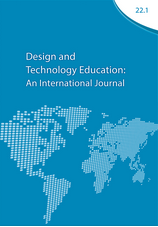The Future of Product Design Utilising Printed Electronics
Keywords:
printed electronics, product design, design education, communication approachesAbstract
This paper addresses the teaching of emerging technologies to design students, using ‘printed electronics’ as an example as it recently became viable to mass manufacture and is ready for use in designs. Printed electronics is introduced as a disruptive technology, and approaches employed in knowledge transfer to industrial/product designers is reviewed. An overview of the technology is provided; the printing processes; material properties; a comparison with conventional electronics; and product examples are identified. Two case studies illustrate approaches for knowledge transfer to student designers. The assessment criteria and design outcomes from the case study projects are reviewed and future/new approaches proposed. The paper concludes that there is a need to develop a thorough knowledge transfer strategy for printed electronics to designers, informed by case studies and extending beyond simply showing examples of existing technology. This is necessary for future proofing both in technological advances and designing for the future.
Downloads
Published
How to Cite
Issue
Section
License

This work is licensed under a Creative Commons Attribution 4.0 International License.
This work is licensed under a Creative Commons Attribution 4.0 International License.
Authors who publish with this journal agree to the following terms:
Authors retain copyright and grant the journal right of first publication with the work simultaneously licensed under a Creative Commons Attribution License that allows others to share the work with an acknowledgement of the work's authorship and initial publication in this journal.
Authors are able to enter into separate, additional contractual arrangements for the non-exclusive distribution of the journal's published version of the work (e.g., post it to an institutional repository or publish it in a book), with an acknowledgement of its initial publication in this journal.


